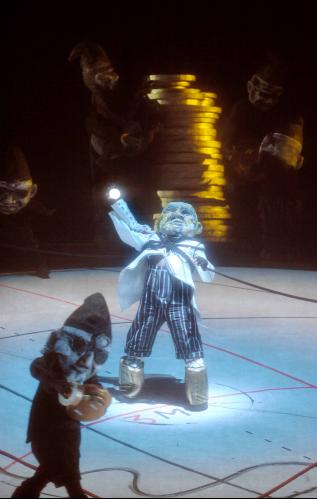All my windows look into windows of other apartments and, on warm days like those we’ve had lately, I’m set up for delicious eavesdropping. I like it best when my neighbors sing. Two nights ago, it was to Lady Gaga. Yesterday afternoon, however, the neighbor to my south, whose voice is as endearingly over-eager as Rachel’s from Glee, was singing opera. A cappella. Usually this would have fascinated me, but yesterday I was listening to opera of my own, trying to understand the Wagner’s Ring Cycle before L.A.’s immense, city-wide Ring Festival commences in L.A.
Staging Wagner’s Ring Cycle typically involves elaborate sets, exuberant costumes, and 17 hours of highly produced, melodramatic music that pits mortals against gods. L.A.’s Ring Festival is headier, functioning almost like a city-wide conference set up to parse every nuance of Wagner’s music and life. Not surprisingly, the Festival has riled up its share of controversy. L.A. isn’t rolling in green at the moment, as my co-blogger Lily Simonson recently explained, and the Ring Cycle costs $32 million, some of which is on loan from the county (“that’s what counties do, build subways and put on Rings,” LA Times‘s critic Mark Swed said Tuesday on KCRW’s Politics of Culture). But money isn’t the most interesting controversy surrounding the Ring.
Ed Winkleman recently gave a rational, convincing argument for the “non-existence of unethical art,” and I think most people would instinctively agree that bad (unethical) artists don’t always make bad art and good (ethical) artists don’t always make good art and that ethics aren’t really the best barometer for determining the goodness and badness of art. Still, the prospect of a truly unethical artist making stunning art is seductively mysterious.
Wagner, notorious for fierce anti-Semitism, was not a good man (had he not written great music dramas, Marc A. Weiner suggests at a Hammer Museum lecture, “he would be just a forgotten narcissistic crackpot from 19th-century Germany, bombastic racist and social theorist with a mean personality and bad manners”). Some dissenters argue that such a man does not deserve a festival. The response given by the heads behind this festival is: “it’s complicated.” This festival endeavors to show just how complicated by addressing everything from Wagner’s renegade politics to his resonance with superheroes.
It is complicated, of course. So are most things, and acknowledging that has lately become synonymous with taking a conscientious approach to making and thinking. This weekend, I drove down to the Torrance Art Museum to visit a sweeping, half-elegant, half-fugitive exhibition by sculptor Ryan Taber. Called Looking out fearfully upon the confined deep, the exhibition acknowledges complexity with neurotic diligence.
Home Depot-style pallets make up the stacked foundation on which a monstrous paper lantern with a long trunk; a non-functional pulley-system balancing fangs of petrified wood, out of which grows a derelict National Parks sign, with a circular modernist cage that resembles an industrial floor plan; and intentionally rustic furniture crafted by Taber for Kaguya, his own collaborative line. The level of disrepair and the level of precision vary. Styles and ideas of the past—the nationalism of fossil-finders like Thomas Jefferson; the sense of entitlement that architects and artists of early America and America of the 50s, 60s, and 70s equally embraced; or the belief that ideology is equivalent to identity—are presented as un-selfconscious, blind to the damages they caused. But then Taber’s own crafted furniture wholeheartedly indulges in the romance of the rustic, and the arrangements of the sculptures on exhibit reveal a fascination with composition for composition’s sake, aesthetic decisions that are simply elegant. The whole exhibition casts a mirror on itself, mimicking, critiquing, and parodying its stylistic predecessors but also reverently reflecting their famous tropes.
I remember listening to an interview David Foster Wallace gave just after he published Brief Interviews with Hideous Men. He talked about how self-conscious artists and writers of his generation had become. “The idea of being perceived and judged by another subjectivity is horrifying,” Wallace said. “Everything has an element of presentation and interpretation…before I say the thing, I already scan and triage your possible responses to it and my responses to your responses and the portraits we’re going to get of each other.”
Wallace’s strategy for avoiding judgment was to acknowledge as many complexities as he could in his writing, to juxtapose charmlessness with charm, to mimic different voices in order to foreground the authenticity of his own, and to be pretentiously smart without being pretentiously off-putting. The organizers of the Ring Festival, like Ryan Taber, adopt a similar method–acknowledging complexity in order to, hopefully, use intense self-awareness to locate something honest. I’m not sure how well this method works, whether it’s ethical or if it’s the way to get to good art, but it’s certainly of our time.
